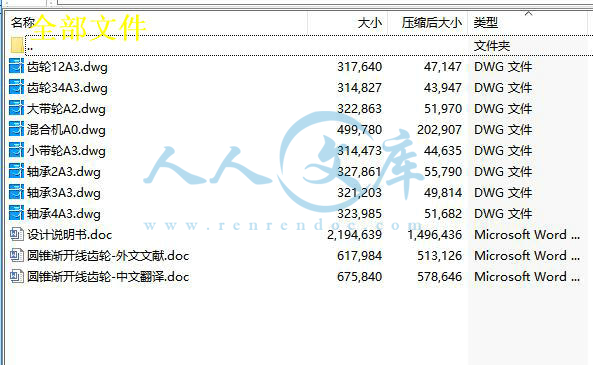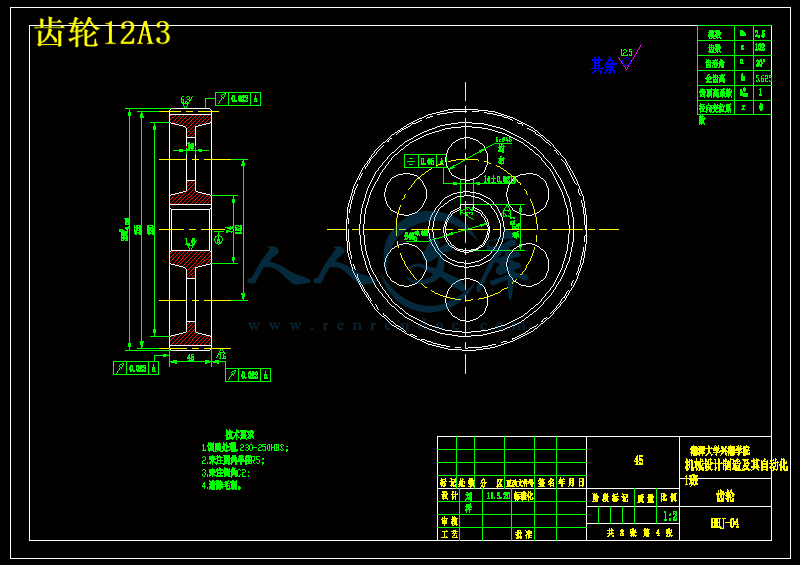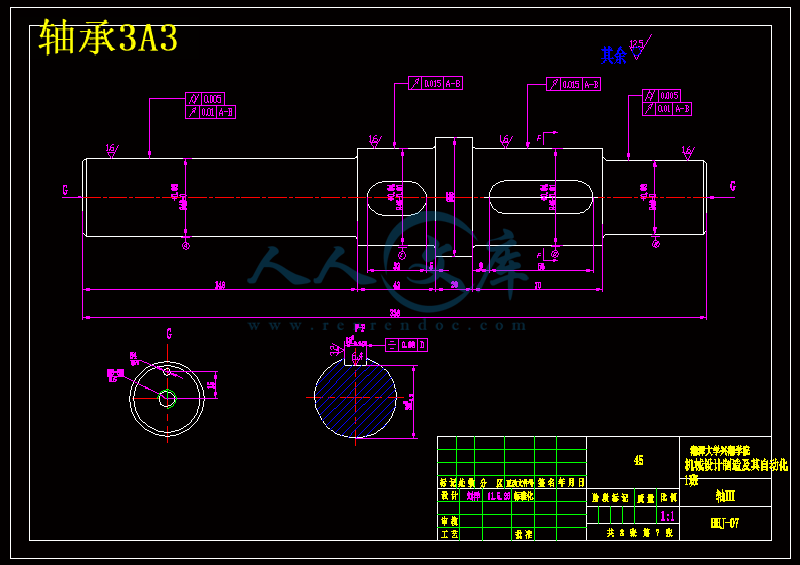目 录
第一章 概述 1
第二章 传动系统的设计 6
2.1传动方案的设计 6
2.2带轮传动的设计 8
2.3第一级齿轮传动的设计 10
2.4第二级齿轮传动的设计 15
2.5链轮传动的设计 18
第三章 部分轴的设计 21
3.1轴Ⅱ的设计 21
3.2轴Ⅲ的设计 24
3.3轴Ⅳ的设计 27
第四章 其他零件的设计 28
设计心得 30
参考文献 31
附录Ⅰ 31
HD600多向运动混合机的设计
摘要:HD600多向运动混合机广泛应用于医药、食品、轻工业等行业,能在三维空间实现回转、平移、翻转等复杂运动,是一种高效的混合设备。在该设计任务书中,我综合分析了该混合机的空间运动结构,并对该混合机传动系统进行了详细的说明计算,同时对空间6杆机构进行运动分析,最后绘制出该混合机的装配图和各主要零件的零件图。
该机的混合筒多方向运动,物料无离心力作用,无比重偏析及分层、积聚现象,各组分可有悬殊的重量比,混合率达99.9%以上,是目前各种混合机中的一种较理想产品。 筒体装料率大,最高可达90%(普通混合机仅为40%),效率高,混合时间短。筒体各处为圆弧过渡,经过精密抛光处理。多向运动混合机的优势在于其特殊的工作原理,以及桶体结构的设计无死角,不污染物料,出料方便,清洗容易,操作简单等优点。
多向运动混合机的混料桶具有X、Y、Z方向的三维运动,多方向运动的功能,物料在容器内作旋转、翻转、湍动和剪切作用,使物料在混合时不产生积聚现象,对不同比重,不同密度和状态的物料混合不产生离心力的影响和偏折;混合时间短,某些物料5-8分钟即可混合均匀。既提高了工作效率,又达到了极高的均匀度,混合均匀性达到99.9%以上。因其最大装载系数可达0.9(普通混合机为0.4~0.6)这一特点,大大缩短了混合物料的时间,提高了混合物料效率。
关键词:混合机 传动系统 空间6杆机构
HD600 multi-sport mixer to the design
Abstract: HD 600multi-sport mixer widely used in medicine ,food and light industries, can realize rotary, translation, roller and some other complex sports in the three-dimensional. It’s a highly efficient hybrid device. In this design of the assignment, I have analyzed the HD400 mixer of more space to the sports movement mixer structure comprehensively, and the mixer containing a detailed description of transmission, while using the 6R outfit of mixer. At last, I drew a assembly map and all the major parts maps of this mixer.
Hybrid multi-barrel machine direction, material is not centrifugal force, no specific gravity segregation and stratification, accumulation of the phenomenon, each component may have poor weight ratio, mixing rate of 99.9%, and is one of a variety of mixer kinds of better products. Cylinder loading rate is high, up to 90% (ordinary mixer only 40%), high efficiency, short mixing time. Throughout the transition for the arc tube, after the polishing treatment. Multi-directional movement mixer has the advantage of special works, as well as the design of barrel structure no dead, no contaminated material, the material convenient, easy to clean, and easy operation.
Multi-directional movement mixer mixing bucket with X, Y, Z direction of the three-dimensional motion, multi-direction function, the material in the container for rotating, flipping, turbulence and shear, so that does not produce the material in the mixed accumulation phenomenon, different specific gravity, density, and status of different materials mixed centrifugal force does not produce the impact and deflection; mixing time is short, some of the material can be mixed for 5-8 minutes. Not only improves the work efficiency, but also to achieve a high uniformity, mixing uniformity of 99.9% or more. Its maximum load factor of up to 0.9 (normal mixer 0.4 ~ 0.6) this feature, greatly reducing the time the mixed materials to improve the efficiency of the hybrid materials.
Key words: mixer transmission system 6R outfit
第一章 概述
多向混合机广泛应用于化工、医药、食品、粉末冶金、涂料、电子、军工、材料等粉体混合领域。粉体混合的质量有时在生产过程中起着关键的作用,例如在化工生产中,均匀的粉体混合为反应创造良好条件;在医药固体制剂的生产中,极微量的药效成分与大量增量剂混合的均匀水平直接影响着药的质量;在粉末冶金中各种不同成分的混合均匀水平影响着材料的强度。混合设备的发展直接影响着粉体混合单元操作的效果。随着纳米技术的发展,粉体混合更显示出它的重要性。
1.1混合机的概念
混合机是利用机械力和重力等,将两种或两种以上物料均匀混合起来的机械。混合机械广泛用于各类工业和日常生活中。混合机可以将多种物料配合成均匀的混合物,如将水泥、砂、碎石和水混合成混凝土湿料等;还可以增加物料接触表面积,以促进化学反应;还能够加速物理变化,例如粒状溶质加入溶剂,通过混合机械的作用可加速溶解混匀。
常用的混合机分为气体和低粘度液体混合器、中高粘度液体和膏状物混合机械、热塑性物料混合机、粉状与粒状固体物料混合机械四大类。









 川公网安备: 51019002004831号
川公网安备: 51019002004831号